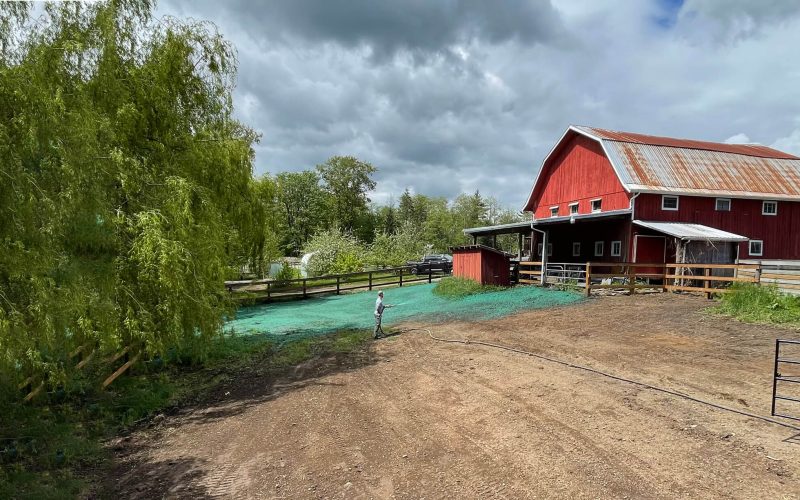Is Hydroseeding Better than Traditional Seeding? A Comprehensive Comparison
Growing a healthy and lush lawn requires careful planning and execution. One of the key decisions you have to make is whether to use traditional seeding or hydroseeding. Both methods have their pros and cons, and in this article, Liquid Green will help you compare them in detail to help you make an informed choice.
Hydroseeding vs. Traditional Seeding: What’s the Difference?
Hydroseeding is a process of spraying a slurry of water, grass seed, fertilizer, and other additives onto a prepared soil surface. The mixture is evenly distributed, which helps to create a uniform and healthy lawn. Hydroseeding is often used for large areas, steep slopes, and hard-to-reach areas and Liquid Greens specialty.
Traditional seeding involves broadcasting seed by hand or using a spreader, and then raking or rolling the seed into the soil. This method is simple and affordable, but it may not provide the same level of coverage and consistency as hydroseeding.
Pros of Hydroseeding
-
Faster germination: Hydroseeded lawns typically germinate faster than traditionally seeded lawns because the seeds are in a nutrient-rich slurry that helps to speed up the germination process.
-
Better coverage: Hydroseeding provides better coverage than traditional seeding because the seeds are evenly distributed across the lawn, which reduces the likelihood of bare spots or patchy growth.
-
Improved soil fertility: Hydroseeding mixtures usually contain fertilizers, mulch, and other additives that help to improve soil fertility and create a healthy growing environment for the grass.
-
Erosion control: Hydroseeding is an effective method of controlling soil erosion because the mulch and other additives help to hold the soil in place and prevent it from being washed away.
Cons of Hydroseeding
-
Cost: Hydroseeding can be more expensive than traditional seeding because of the additional equipment and materials required.
-
Water management: Hydroseeding requires frequent watering to ensure that the seeds germinate and the lawn establishes properly.
-
Equipment damage: Hydroseeding equipment can be damaged if not used properly, which can result in additional costs and delays.
Pros of Traditional Seeding
-
Affordability: Traditional seeding is often more affordable than hydroseeding, making it a great option for those on a budget.
-
DIY-friendly: Traditional seeding can be done by hand or with a basic spreader, which makes it a great option for those who prefer to do their own lawn care.
-
Less water management: Traditional seeding requires less water than hydroseeding because the seeds are not in a slurry, which can save on water bills and reduce water usage.
Cons of Traditional Seeding
-
Uneven coverage: Traditional seeding can result in uneven coverage, which may require additional seeding and maintenance to address.
-
Slow germination: Traditional seeded lawns may take longer to germinate than hydroseeded lawns because the seeds are not in a nutrient-rich slurry.
-
Limited erosion control: Traditional seeding does not provide the same level of erosion control as hydroseeding because there are no additives to help hold the soil in place.
Both hydroseeding and traditional seeding have their advantages and disadvantages, and the best method for your lawn will depend on your specific needs, budget, and preferences. Hydroseeding is a great option for those who want faster germination, better coverage, and improved soil fertility, while traditional seeding is a more affordable and DIY-friendly option. Ultimately, the decision should be based on the size of the area, soil quality, water availability, and your personal preferences. If you are unsure which method is right for you, consult a lawn care professional for advice.

See above photo of a Liquid Green Professional applying Hydroseed to soil substrate.


